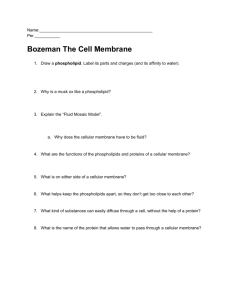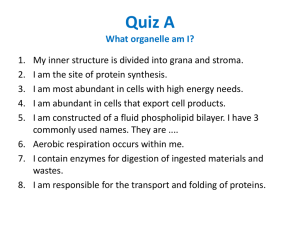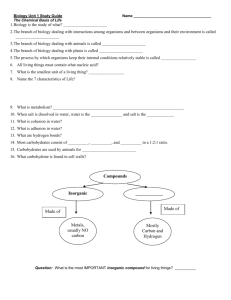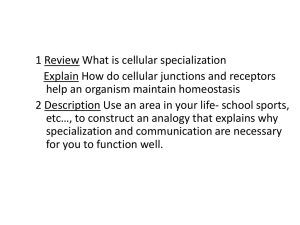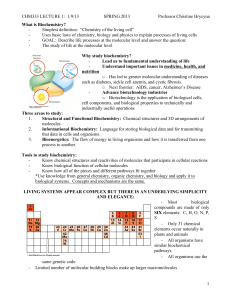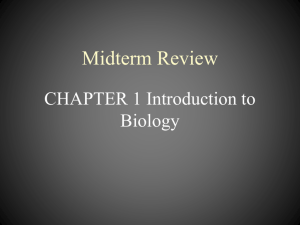Final Study Guide
advertisement
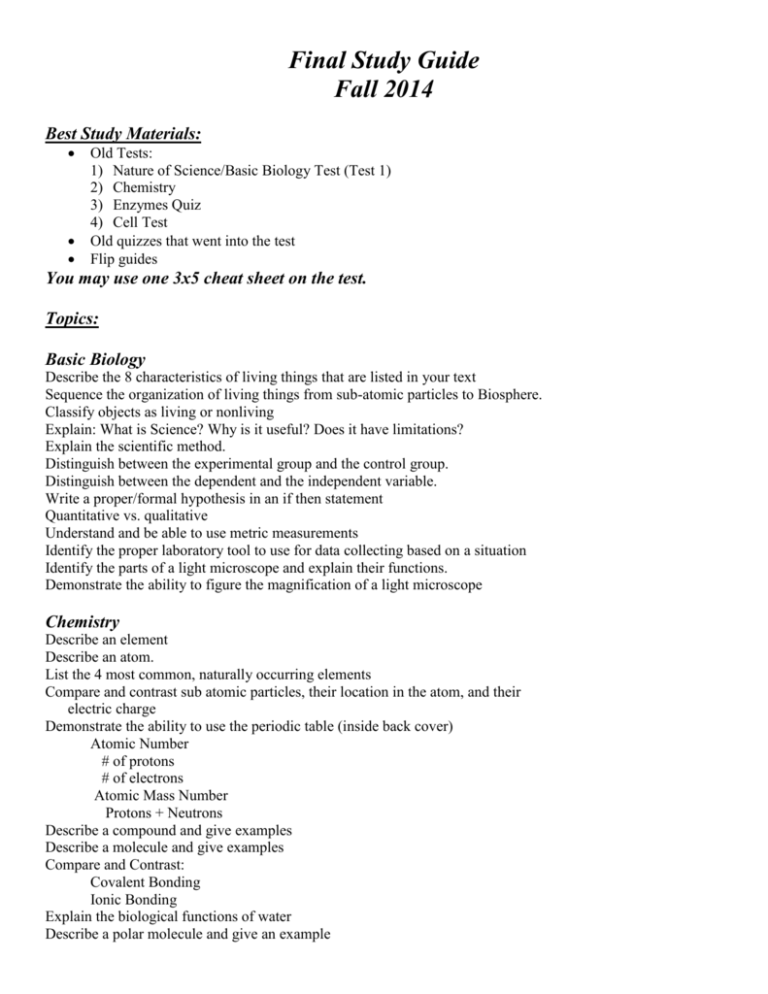
Final Study Guide Fall 2014 Best Study Materials: Old Tests: 1) Nature of Science/Basic Biology Test (Test 1) 2) Chemistry 3) Enzymes Quiz 4) Cell Test Old quizzes that went into the test Flip guides You may use one 3x5 cheat sheet on the test. Topics: Basic Biology Describe the 8 characteristics of living things that are listed in your text Sequence the organization of living things from sub-atomic particles to Biosphere. Classify objects as living or nonliving Explain: What is Science? Why is it useful? Does it have limitations? Explain the scientific method. Distinguish between the experimental group and the control group. Distinguish between the dependent and the independent variable. Write a proper/formal hypothesis in an if then statement Quantitative vs. qualitative Understand and be able to use metric measurements Identify the proper laboratory tool to use for data collecting based on a situation Identify the parts of a light microscope and explain their functions. Demonstrate the ability to figure the magnification of a light microscope Chemistry Describe an element Describe an atom. List the 4 most common, naturally occurring elements Compare and contrast sub atomic particles, their location in the atom, and their electric charge Demonstrate the ability to use the periodic table (inside back cover) Atomic Number # of protons # of electrons Atomic Mass Number Protons + Neutrons Describe a compound and give examples Describe a molecule and give examples Compare and Contrast: Covalent Bonding Ionic Bonding Explain the biological functions of water Describe a polar molecule and give an example Describe a solute Describe a solvent Compare and Contrast two types of mixtures (solutions and suspensions) Explain pH Define acid and give examples Define base and give examples Explain the purpose of buffers in biochemistry Define organic Describe Van der Waals forces Describe an isomer and give a common example Define macromolecule and give examples Describe the structure of a polymer and explain how polymers are formed and broken down Define a monomer, polymer Describe carbohydrate structure and function Describe saccharides? Give examples Describe the structure and function of lipids in organisms Describe the structure and function of proteins in organisms Describe the structure and function of Nucleic Acids Demonstrate the ability to interpret a chemical reaction Identify the reactants Identify the products Summarize metabolism Describe an enzyme and explain its importance in metabolism Explain how the enzyme-substrate complex works Enzyme activity is regulated by Describe activation energy Explain surface tension, adhesion and cohesion Know the chemical reaction for photosynthesis and cellular respiration The Cell Explain the main ideas of the cell theory Compare and contrast prokaryotic and eukaryotic cells List 3 structures that all cells have in common Describe the structure and function of the parts of typical eukaryotic cells Nucleus (DNA) cell wall cellular (plasma) membrane nuclear membrane/ nuclear pores cytoplasm endoplasmic reticulum ribosomes golgi apparatus (body) lysosomes vacuoles nucleolus Plastids (chloroplasts/ leucoplasts) Mitochondria cytoskeleton Explain the advantages of highly folded membranes in cells Explain how cells can be organized to become a complex organism Match the description of cell parts to their names Compare and Contrast plant and animal cells Identify where mitochondria and chloroplast are thought to have originated from Review of macromolecules Summarize homeostasis Explain and give an example of selective permeability. Describe the structure and function of the Cellular/Plasma Membrane. a. What is a Phospholipid? Define hydrophilic Define hydrophobic Describe how the polarity of a phospholipid dictates the structure of the cellular/plasma membrane? b. Describe transport proteins- what is their role in cellular transport c. Describe the role that cholesterol plays in the structure of the plasma membrane? d. Explain “Fluid Mosaic Model” Describe the process of diffusion and osmosis Explain dynamic equilibrium Explain a concentration gradient Conclude how the concentration gradient determines where molecules move in the processes of diffusion Predict what will happen to animal and plant cells placed into: a. isotonic solution b. hypotonic solution c. hypertonic solution Explain plasmolysis Compare and contrast passive and active transport. Compare unicellular organisms to multicellular organisms Describe cell specialization, and give examples in animal and plant cells Mitosis and the Cell Cycle Explain the problems that growth causes for cells. Compare sexual and asexual reproduction Describe the role of chromosomes in cell division. Name the main events of the cell cycle. Describe what happens during the four phases of mitosis. Describe the process of cytokinesis. Describe how the cell cycle is regulated. Explain how cancer cells are different from other cells.
